Type
dataset
2724 record(s)
Type of resources
Available actions
Topics
INSPIRE themes
Keywords
Contact for the resource
orgNameSNIG
Provided by
Years
Formats
Representation types
Update frequencies
Status
Scale
Resolution
geoDescCode
cartografia
geographicCoverage
geographicCoverageDesc
inspirecore
hvd
referenceDateRange
denominatorRange
resolutionRange
dataPolicy
openServiceType
dataType
dataFormat
-
-
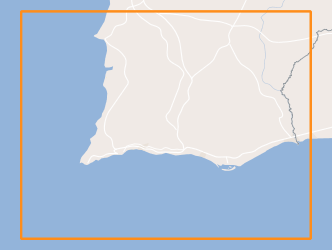
Within Portugal's National Biological Sampling Project (PNAB) a set of activities are conducted in the collection, management and use of biological data, collected from the registered commercial fleet in mainland Portugal (fisheries-dependent data) and several research surveys (independent fisheries data). These activities allow the assessment of the state of fishery resources, population structure, distribution and abundance of resources, diversity and dynamics of biological communities associated with the fishery resources and biological studies (growth, reproduction).This resource shows the geographic distribution of golden shrimp abundancy index (nr. individuals/hour) registered during the CRUSTACEOS2009 campaign in June 2009.
-
The marine energy potential maps for mainland Portugal consists of the mapping the main wind and wave parameters for the offshore environment at the height of 100m (offshore wind resource) and at surface (wave energy resource). The offshore wind resource is performed with a sophisticated mesoscale atmospheric model, capable of describing the main wind phenomenology near the Portuguese coast, and contains the mapping of the average wind speed [m/s], Wind Power Flux [W/m2] and the map of the annual number of hours at full capacity NEPS of a standard reference turbine as well as the NEPS maps [h/year] for specific type of bottom-fixed wind turbine systems - "Jacket" and "Monopile" or Floating – WindFloat. The offshore wind resource maps represent the climatology of the wind resource as well as characteristics of the wind phenomenology associated to the land-sea interaction along the Portuguese coast. Regarding the wave energy maps, the estimation of the wave energy resource is based in estimating the main sea-wave characteristics and the wave energy production for standard different wave system types – oscillation water column converter; floating two-body heaving converter bottom-fixed oscillating flap converter. The maps of the wave energy resource are a merging of observational data (boys) and information from the ONDATLAS database as well as data from numerical modeling with the MAR3G model all with 10 years of data . This way the wave energy resource maps describe the main characteristics of the average wave resource for a period of 10 years, which is representative of the sea state climatology of Portugal. All wave energy maps are expressed in [kW/m]. Also, all wind and wave energy resource maps are processed with a high spatial resolution of 1km x 1km from the coast up to the bathymetric of 300m. Some wind and wave energy maps are freely available to download in a course but larger grid area (5Km x 5Km). In time, the offshore wind maps will include higher heights.
-
This work was carried out by the GTAER - Working Group for the Definition of Renewable Energy Acceleration Areas, created by Order no. 11912/2023 of 23 November, and is intended to consolidate and strengthen the previous work carried out to identify the areas with the least sensitivity for the location of renewable electricity production units (solar photovoltaic and wind). The work presented here assessed the potential for implementing these units in natural areas or territories. The process of identifying PRAAs, took into account 5 different scenarios, depending on whether or not the following constraints were excluded: (i) areas relating to aquifers classified as porous or essentially porous, belonging to the western edge and the Tejo-Sado basin; (ii) areas relating to the distance between residential and mixed-use built-up areas and (iii) available RAN (National Agricultural Reserve) and REN (National Ecological Reserve) areas. The areas presented contribute to the definition of future preferential RAAs areas - they do not constitute the formal definition of the RAAs. In future RAAs, the licensing process will be simplified. It should be noted that these areas are not exclusive, and renewable energy units can be implemented in the rest of the territory in accordance with the normal licensing process. The results presented reflect the situation as of February/March 2024.
-
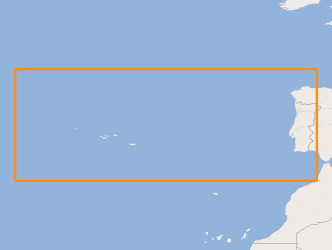
Location of structures resulting from the submarine fluids emissions, such as: mud volcanoes (methane hydrates); Pockmaks (methane) and hydrothermal vents (fluids enriched in salts and metallic elements), located between the Mid-Atlantic Rift zone (Azores archipelago) and the continental margin.
-
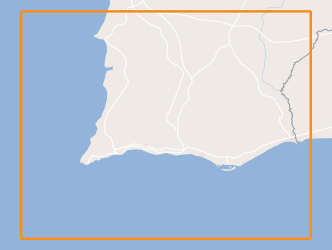
Within Portugal's National Biological Sampling Project (PNAB) a set of activities are conducted in the collection, management and use of biological data, collected from the registered commercial fleet in mainland Portugal (fisheries-dependent data) and several research surveys (independent fisheries data). These activities allow the assessment of the state of fishery resources, population structure, distribution and abundance of resources, diversity and dynamics of biological communities associated with the fishery resources and biological studies (growth, reproduction).This resource shows the geographic distribution of silvery pout abundancy index (nr. individuals/hour) registered during the CRUSTACEOS2008 campaign in June 2008.
-

Within Portugal's National Biological Sampling Project (PNAB) a set of activities are conducted in the collection, management and use of biological data, collected from the registered commercial fleet in mainland Portugal (fisheries-dependent data) and several research surveys (independent fisheries data). These activities allow the assessment of the state of fishery resources, population structure, distribution and abundance of resources, diversity and dynamics of biological communities associated with the fishery resources and biological studies (growth, reproduction).This resource shows the geographic distribution of blackbelly rosefish abundancy index (nr. individuals/hour) registered during the CRUSTACEOS2013 campaign in June 2013.
-
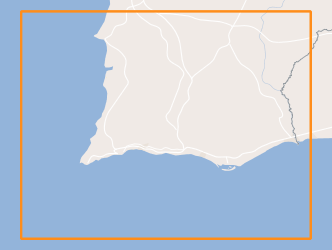
Within Portugal's National Biological Sampling Project (PNAB) a set of activities are conducted in the collection, management and use of biological data, collected from the registered commercial fleet in mainland Portugal (fisheries-dependent data) and several research surveys (independent fisheries data). These activities allow the assessment of the state of fishery resources, population structure, distribution and abundance of resources, diversity and dynamics of biological communities associated with the fishery resources and biological studies (growth, reproduction).This resource shows the geographic distribution of european hake abundancy index (nr. individuals/hour) registered during the CRUSTACEOS2014 campaign in June 2014.
-
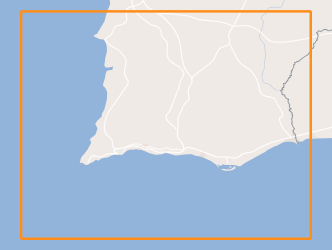
Within Portugal's National Biological Sampling Project (PNAB) a set of activities are conducted in the collection, management and use of biological data, collected from the registered commercial fleet in mainland Portugal (fisheries-dependent data) and several research surveys (independent fisheries data). These activities allow the assessment of the state of fishery resources, population structure, distribution and abundance of resources, diversity and dynamics of biological communities associated with the fishery resources and biological studies (growth, reproduction). This resource shows the geographic distribution of blackbelly rosefish abundancy index (nr. individuals/hour) registered during the CRUSTACEOS2010 campaign in June 2010.
-

Within Portugal's National Biological Sampling Project (PNAB) a set of activities are conducted in the collection, management and use of biological data, collected from the registered commercial fleet in mainland Portugal (fisheries-dependent data) and several research surveys (independent fisheries data). These activities allow the assessment of the state of fishery resources, population structure, distribution and abundance of resources, diversity and dynamics of biological communities associated with the fishery resources and biological studies (growth, reproduction).This resource shows the geographic distribution of blue whiting abundancy index (nr. individuals/hour) registered during the CRUSTACEOS2009 campaign in June 2009.
